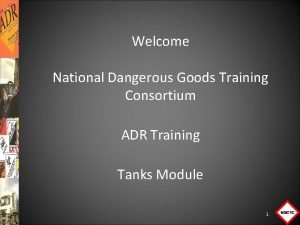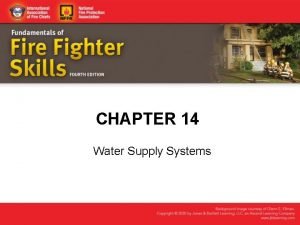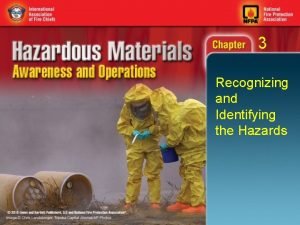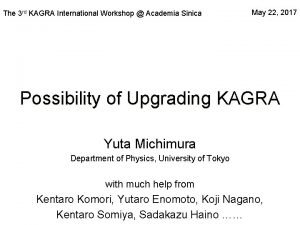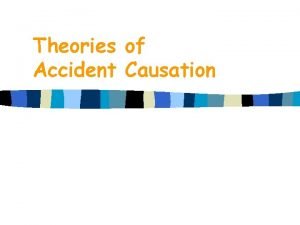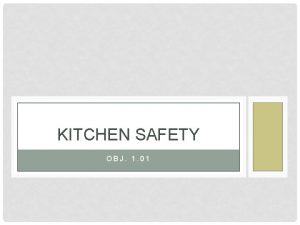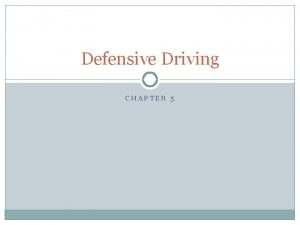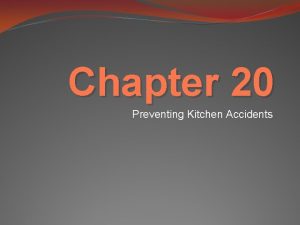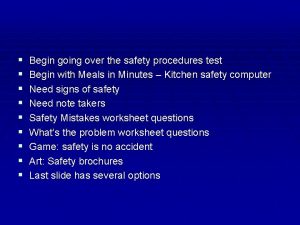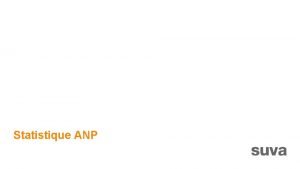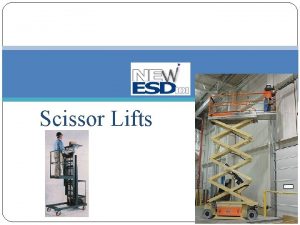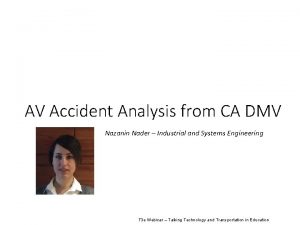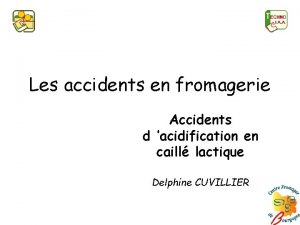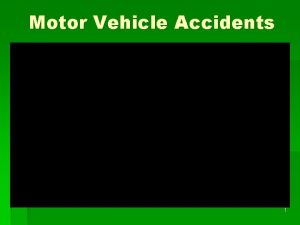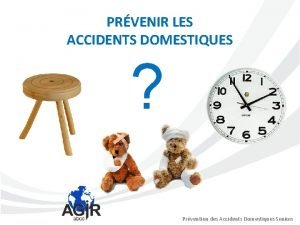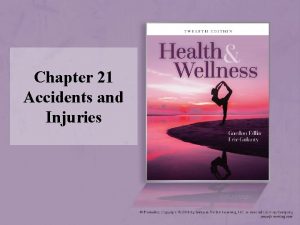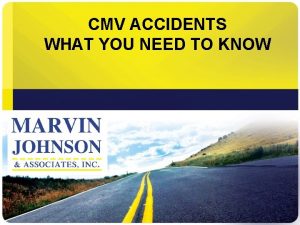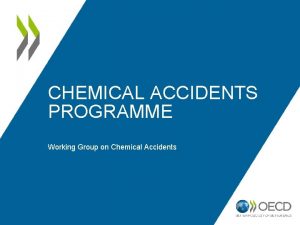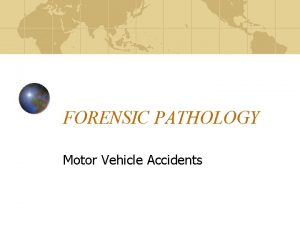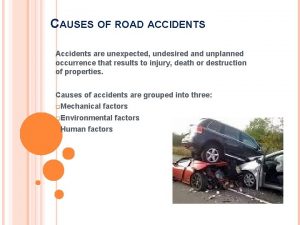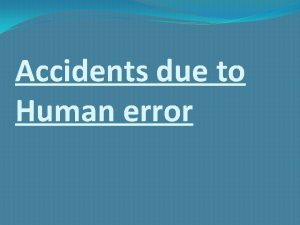Analysis of AFRAMAX Tankers accidents International workshop on

















- Slides: 17

Analysis of AFRAMAX Tankers accidents International workshop on marine oil pollution control June 9, 2006 Athens Greece Professor A. Papanikolaou, Ship Design Laboratory, NTUA, GREECE NTUA-SDL POP&C: Analysis of AFRAMAX Tanker Accidents

Introduction The scope of presented research is the identification of basic events leading to major tanker casualties and the investigation of factors related to consequences such as the degree of incidents’ severity, event location and ship operating condition at the time of incident, loss of watertight integrity, weather impact, loss of life/injury and oil spill occurrence. A rational database of AFRAMAX tankers was set up in the framework of the EU funded project POP&C (Pollution Prevention and Control, 2004 -2007) to enable the full exploitation of available raw accident data of INTERTANKO, mainly compiled by Lloyd’s Marine Information Service (LMIS). NTUA-SDL POP&C: Analysis of AFRAMAX Tanker Accidents 2

Methodology of work (1) Source of data l l l Raw accident records were made available by INTERTANKO Since the POP&C project has used the AFRAMAX size tankers to demonstrate the applicability of the developed risk based methodology, the present analysis focused mainly on records pertaining to AFRAMAX tankers (DWT size segment 80, 000 – 119, 999). In addition to the size constraint, only the basic AFRAMAX subtypes were investigated, namely Oil Tankers, Crude Tankers, Shuttle Tankers, Product Carriers and Chemical/Oil Tankers. Out of 16554 raw data accident records pertaining to all sizes and types of tankers, 1294 accident records of AFRAMAX ships were herein finally extracted and postprocessed, covering the period 1978 to early 2004. NTUA-SDL POP&C: Analysis of AFRAMAX Tanker Accidents 3

Methodology of work (2) The initially selected records were imported into a purposely developed new database. This database was further enhanced to enable the postprocessing textual information contained in the raw data records, namely its easy retrieve and systematic analysis. The registered information was filed in a way enabling the population of the Risk Contribution Fault Trees (FTs) and Event Trees (ETs) developed by the POP&C project. The process of populating the POP&C database was carried out by a team of experts of WP 2. Each partner organisation undertook the task of studying the raw data textual information of each record and entering the relevant information into the database in the specified format. The initially filed information was reviewed twice by other experts before finalising each record. NTUA-SDL POP&C: Analysis of AFRAMAX Tanker Accidents 4

POP&C Database Oil spill info Initial LMIS data Fatalities. Injuries Location Oper. Cond. Envi Outcome New Accident categories Fault Trees Information for each accident category NTUA-SDL Hull Info POP&C: Analysis of AFRAMAX Tanker Accidents 5

Review of Results Since the main scope of POP&C project is to evaluate accidents that led directly to ship’s loss of watertight integrity (LOWI), the analysis of data was focused on the six major POP&C accident categories, leading to LOWI, namely l l l Non-Accidental Structural Failure Collision Contact Grounding Fire Explosion accidents Below Figure presents the overall accident rate per shipyear pertaining to all six major accident categories. The straight lines represent the average rates for the particular reference period. NTUA-SDL POP&C: Analysis of AFRAMAX Tanker Accidents 6

Rates and pollution Although the frequency of accidents’ occurrence has been significantly reduced especially in the post-90 period, the frequency of accidents that caused pollution is about the same for the post-90 period. High Spilled Tonne Rate is met in 1980, 1993 and 2002. This is not related to the relatively high number of occurred accidents but to one casualty per mentioned year with catastrophic environmental consequences, namely “IRENES SERENADE” (80, 000 t - 1980), “BRAER” (88, 214 t - 1993) and “PRESTIGE” (77, 000 t - 2002). NTUA-SDL POP&C: Analysis of AFRAMAX Tanker Accidents 7

Oil Spill Quantity The highest number of accidents causing environmental pollution arises from Non-Accidental Structural Failure. However, when the oil spill quantity is considered, Grounding & Explosion accidents gave the largest oil pollution quantities. The severity of the Explosion accidents must be highlighted: For example, two Explosion accidents led to more pollution than nineteen Non-Accidental Structural Failures. NTUA-SDL POP&C: Analysis of AFRAMAX Tanker Accidents 8

Hull Type versus Oil Spills Post-90 period Significant increase of the pollution index (spilt tonnes/shipyear) for the SH-non. SBT/PL ships. Increase of index also for the DS ships. Significant reduction of the index for the DB and the SH-SBT-PL ships in the post 90 s period. DH and SH-SBT/PL indices comparable in the post-90 period DB concept DS concept DH concept with “L” and “U” arrangement NTUA-SDL POP&C: Analysis of AFRAMAX Tanker Accidents 9

Accident rates of Double Hull and Non-Double Hull The below figure presents the collision, contact and grounding (i. e. navigational) accident rates for all hull types, and also separately for the DH and non-DH configurations. For these accident categories, no consistent statistical difference in the accident rates of the different hull configurations is expected, because the frequency of navigational accidents cannot rationally be affected by the hull configuration. NTUA-SDL POP&C: Analysis of AFRAMAX Tanker Accidents 10

AFRAMAX Tankers, Frequencies by Age SH-Non SBT/PL ships (pre-MARPOL tankers) & DS ships NTUA-SDL SH-SBT/PL ships (MARPOL tankers) & DH ships POP&C: Analysis of AFRAMAX Tanker Accidents 11

AFRAMAX Tankers, Non-Accidental Structural Failures Focusing on the Non-Accidental Structural Failures which occur to ships of age up to 5 years, it can be stated that DH-ships have lower but non negligible rates, Figure left hand side. Considering Non-Accidental Structural Failures which occur to ships of age between 11 -15 years, Single Hull non-SBT/PL ships presented by far the highest rates, while it is still too early to attempt drawing any conclusions on the performance of middle aged Double Hull tankers, Figure right hand side. NTUA-SDL POP&C: Analysis of AFRAMAX Tanker Accidents 12

Main Conclusions (1) Accident databases such as the one utilized by POP&C are potentially important tools for gauging the safety and the environmental performance of the tanker industry. Other databases currently in use suffer from some serious weaknesses that greatly diminish the ability to utilize their data: l l Firstly, although they contain a plethora of records of shipping casualties, the source of their information is often non- technical. The way the information is categorised, is not detailed. Accidents are assigned to a single category, such as Collision, Grounding, Fire/Explosion, Hull & Machinery. This one -dimensional categorisation ignores the basic fact that accidents are sequences of undesirable events each of these having their own probability profile. Regarding the accidents of AFRAMAX fleet: l l l Overall tanker accidents decreased significantly in the post-90 s period, however oil pollution rates remained about the same. From the various tanker hull design concepts currently operating, it appears that the Double Hull and the Single Hull with SBT/PL perform best in all accidental categories. The impact of ship’s age on tanker accidents is not straightforward; middle aged ships appear to be more sensitive to Non-Accidental Structural failures, compared to older (!) and younger ships. This is clearly so with single hull ships and remains to be clarified for the double hull ships, currently too young in age to be conclusively assessed. NTUA-SDL POP&C: Analysis of AFRAMAX Tanker Accidents 13

Main Conclusions (2) Further studies beyond those of the POP&C project were conducted by the Ship Design Laboratory of NTUA, namely addressing the SUEZMAX, VLCC and ULCC tanker fleets, thus practically all large size tankers. l l l Accident rates of large tankers have been significantly decreased over the period 19782003. Rates of accidents leading to pollution as well as rates of accidents with high degree of severity have been reduced as well but not to the same extent. Spilled tonne rates present a decline trend along the studied period for SUEZMAX and VLCC-ULCC tankers. Concerning AFRAMAX tankers, a slight increase has been found mainly due to the “BRAER” and “PRESTIGE” casualties in the post 90 ties period. NTUA-SDL POP&C: Analysis of AFRAMAX Tanker Accidents 14

Main Conclusions (3) World map of oil pollution due to large tankers accidents over the period 1978 -2003. The analysis of geographic locations of recorded accidents with high pollution showed that besides the Caribbean Sea, the Southwest & South European and Southwest & South African coasts were more heavily polluted by large oil tanker accidents in the period 1978 -2003. NTUA-SDL POP&C: Analysis of AFRAMAX Tanker Accidents 15

References POP&C, “Pollution Prevention and Control. ” EU project, 6 th Framework Programme, Contract No TST 3 -CT-2004 -506193, 2004 -2007, website: www. pop-c. org Papanikolaou A. , Eliopoulou E. , Alissafaki A. , Aksu S. , Tuzcu C. , Delautre S. , & Mikelis N. 2005. Critical Review of AFRAMAX Tankers Incidents, 3 rd International Conference ENSUS 2005, 1315 April, Newcastle upon Tyne. Papanikolaou A. , Eliopoulou E. , Alissafaki A. , Aksu S. , Delautre S. and Mikelis N. 2005 “Systematic Analysis and Review of AFRAMAX Tankers incidents. ” Proc. 11 th International Association of the Mediterranean Congress IMAM 2005 , Portugal. Papanikolaou A. , Eliopoulou E. , Mikelis N. , Aksu S. and Delautre S. 2005 “Casualty analysis of tankers. ” RINA, Proc. Learning from Marine Incidents III 2006, London, UK. Papanikolaou A. , Eliopoulou E. , Mikelis N. “Impact of hull design on tanker pollution” RINA, 9 th International Marine Design Conference IMDC 2006, Ann Arbor Michigan. Mikelis N. , Delautre S. and Eliopoulou E. “Tanker safety record at all-time high” Lloyds List, 29 September 2005. Mikelis N. , Papanikolaou A. and Eliopoulou E. “Analysis uncovers tanker fleet pollution surprises” Lloyds List, 17 February 2006. NTUA-SDL POP&C: Analysis of AFRAMAX Tanker Accidents 16

Analysis of AFRAMAX Tankers accidents International workshop on marine oil pollution control June 9, 2006 Athens Greece Professor A. Papanikolaou, Ship Design Laboratory, NTUA, GREECE NTUA-SDL POP&C: Analysis of AFRAMAX Tanker Accidents
 National dangerous goods training consortium
National dangerous goods training consortium The number of tankers needed for a fire will depend on the
The number of tankers needed for a fire will depend on the Mc-338
Mc-338 Kagra international workshop
Kagra international workshop Goal freedom alertness theory
Goal freedom alertness theory How momentum conservation is applied in vehicular accidents
How momentum conservation is applied in vehicular accidents Texte argumentatif sur les accidents de la route
Texte argumentatif sur les accidents de la route Kitchen safety choking
Kitchen safety choking Most accidents are caused by _________ driving error
Most accidents are caused by _________ driving error Chapter 20 preventing kitchen accidents
Chapter 20 preventing kitchen accidents Chapter 14:1 using body mechanics
Chapter 14:1 using body mechanics Preventing kitchen accidents worksheet
Preventing kitchen accidents worksheet Accidents sportifs statistiques
Accidents sportifs statistiques Aerial work platform accidents
Aerial work platform accidents Accidents/illness of family members
Accidents/illness of family members Chapter 13:2 preventing accidents and injuries
Chapter 13:2 preventing accidents and injuries Av accidents
Av accidents Industrial radiography accidents
Industrial radiography accidents
